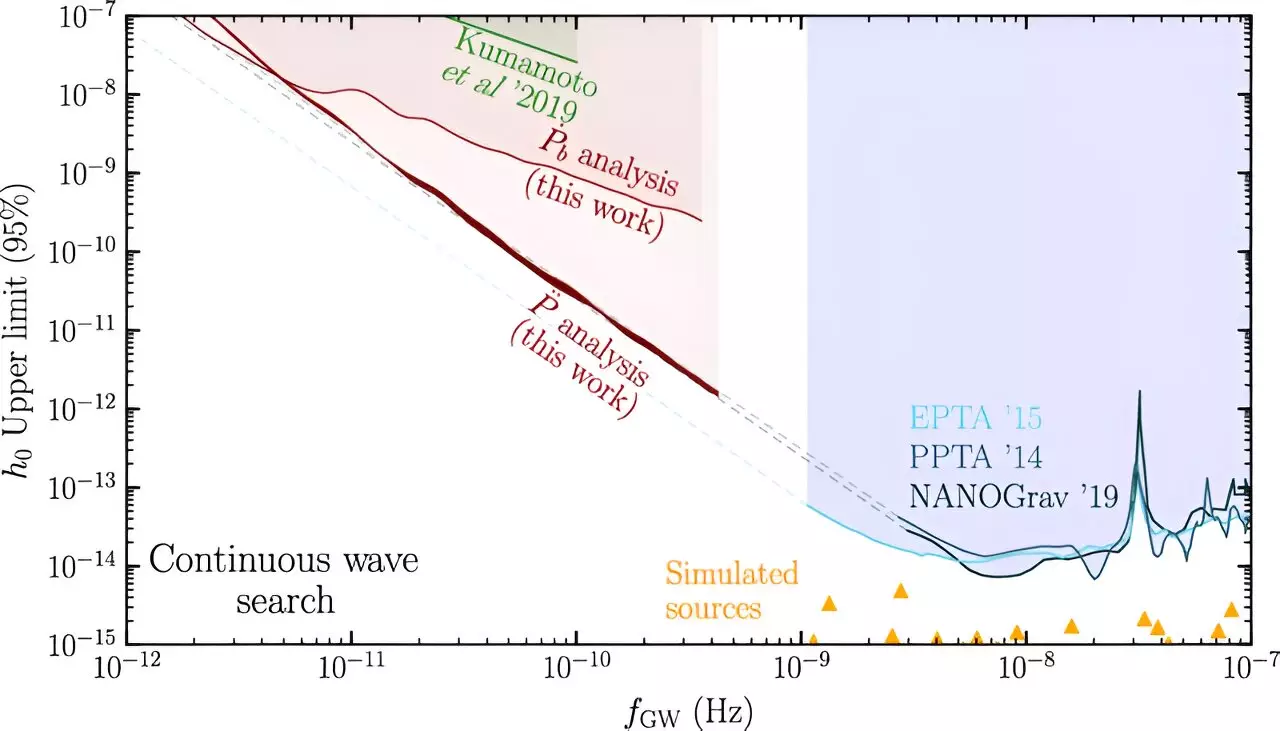A groundbreaking method has been developed by a team of physicists to detect gravity waves with extraordinarily low frequencies that could provide insight into the early stages of mergers between supermassive black holes, the most massive entities in the cosmos. These gravitational waves oscillate at frequencies as slow as once every thousand years, a hundred times slower than any previously recorded gravitational waves. This innovative approach, spearheaded by Dr. Jeff Dror, an assistant professor of physics at the University of Florida, and his colleague William DeRocco, a postdoctoral researcher at the University of California, Santa Cruz, has the potential to revolutionize our understanding of the universe.
Gravitational waves, often described as ripples in space, provide valuable information about their source and age through variations in frequency and amplitude. These waves, like sound waves or ocean waves, can have extremely low frequencies that are beyond the range of human perception. Previous detections of gravitational waves have been limited to frequencies as low as one nanohertz, but Dror’s new method has extended this range to frequencies as low as 10 picohertz. This breakthrough allows for the exploration of uncharted territories in the study of cosmic phenomena.
The novel method of detection proposed by Dror and DeRocco involves analyzing pulsars and neutron stars that emit radio waves at precise intervals. By observing a gradual deceleration in the arrival of these pulses, the researchers can identify new gravitational waves with unprecedentedly low frequencies. This approach expands the “hearing range” for detecting gravitational waves and opens up possibilities for studying the origins and behaviors of supermassive black holes.
The detection of gravitational waves at such low frequencies has profound implications for our understanding of cosmic history. While previous studies have detected gravitational waves around the nanohertz range, little is known about their precise origins. The prevailing hypothesis suggests that these waves stem from the mergers of supermassive black holes, offering a unique opportunity to investigate the characteristics of these cosmic giants. Alternatively, these waves could have been generated by cataclysmic events in the early universe, presenting researchers with a chance to uncover significant insights into the cosmic timeline.
Moving forward, Dror emphasizes the importance of analyzing newer datasets to further refine the detection and study of gravitational waves at ultra-low frequencies. The advancements in technology, such as UF’s HiPerGator supercomputer, enable researchers to conduct complex simulations on vast datasets efficiently. By harnessing the power of advanced computing systems, scientists can delve deeper into the mysteries of the cosmos and unravel the secrets hidden within the fabric of space-time.
The development of this innovative method for detecting gravity waves at unprecedented frequencies marks a significant milestone in the field of astrophysics. By exploring the realms of gravitational waves with such precision and accuracy, researchers are poised to unlock the secrets of the universe and gain invaluable insights into the cosmic history that has shaped our existence.


Leave a Reply